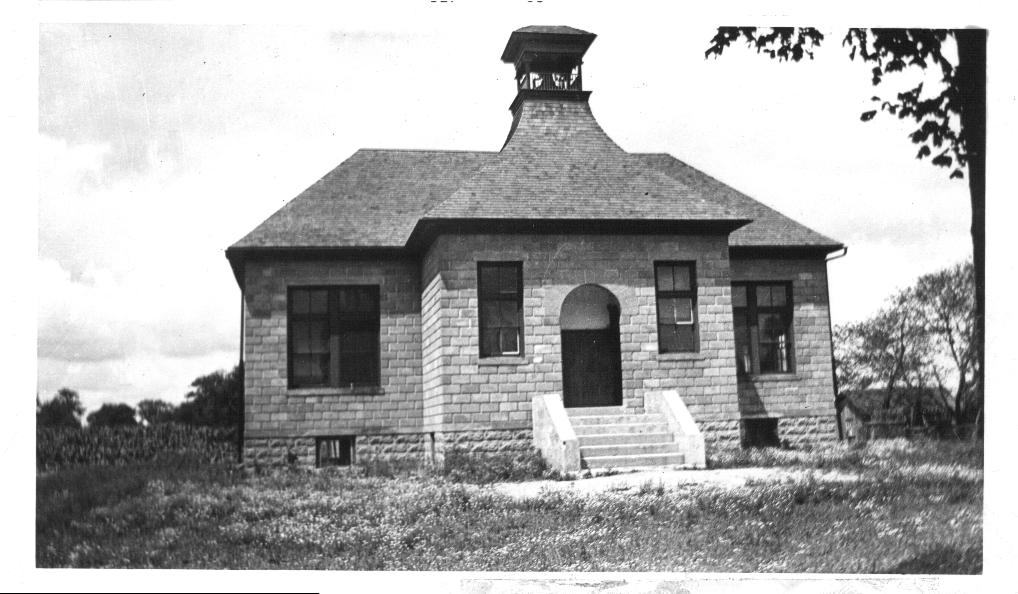

Between 1867 and 1924 Godwin was a one room school house, as can be seen in a 1900 photograph. Many schools outside the city limits of Grand Rapids were still one room school houses at this time, and only when an area grew enough to support a larger structure did this situation change. One room school houses were still common en the 1940s, and the early 1950s, at which point the need for access to 12 year programs, school buses, and district consolidation caused many one room school houses to be abandoned. Generally strong structures, a few were converted in to homes. Failing that, the structures were often simply abandoned, at which point vandals went to work, and the structures were eventually demolished.
In their day, the schools were located every two to three miles, depending on terrain, in a more or less rectangular grid pattern, and students often walked a mile to a mile and a half each way. Good weather and bad. Commonly the schools would only go to the 6th or 8th grade, and if a student wanted to graduate from high school some provision for accessing a 12 year school. Starting in the fall of 1925, that could have been Godwin, which became a 12 year school, and graduated its first full 12 year class in 1927.
Below are some examples of one room school houses other than Godwin. In some cases students eventually transferred to Godwin.

Photograph provided by Debargha Sengupta, Kentwood Historic Preservation Commission.
The photograph above shows Bowen school in about 1960. Known as Bowen #4, it was completed in 1905 by Bostwick Bowen. An example of recycling, the school was built of concrete blocks that were previously part of the Grand River Valley Railroad ( later, the Michigan Central Railroad, and finally, the NY Central railroad) depot near the corner of 44th Street and Kalamazoo Avenue. The depot, which the Bowen's wanted off of their property, was already abandoned in 1904. Bostwick Bowen razed the depot, and used materials from the building to build the school. It would have been easiest to make the school look somewhat like the depot, but whether this is at all the case is unknown. So far, a photograph of the depot has not been located.
Left click on the image below for a larger version.
Cora, Jessie, Bostwick, and Ethel Bowen, in the 1940s.
Bowen #1 was apparently a log structure. Little is known about its fate. Bowen #2 was a familiar looking structure from about the 1870s. Wood construction, with a porch and a small bell enclosure on the top, it burned in 1904.
Since the students had taken to calling a temporary school location "Bowen #3," the new school building was called Bowen #4. Reflecting a new idea, at least locally, the school had two rooms, and the older and younger students were separated. For reasons unclear, save that it probably went against tradition, the idea was said to be controversial. But the Bowen family, who championed the idea, were on the school board, and eventually convinced the community that this was a good idea. Why is not clear, since one room school houses had long used the approach of having the older students teach the younger one, under the supervision of the teacher.
The building was demolished in 1962.
Left click on the images below for larger versions.
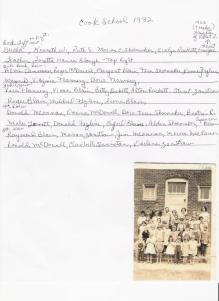
|
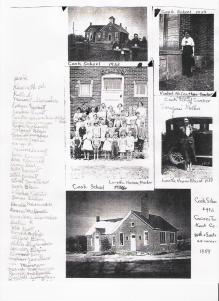
|
The material above was provided by Phyllis Morris, Godwin class of 1962.
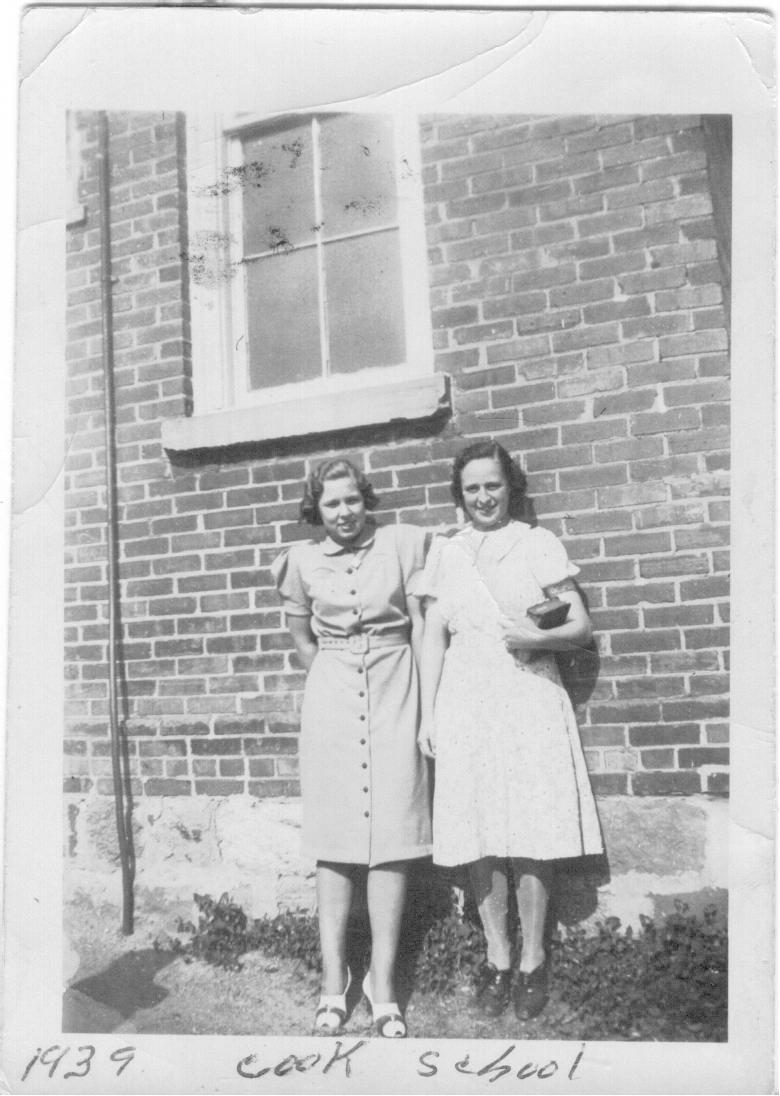
Photograph provided by Kim (Shepard) Brown, Godwin class of 1970.
Shown in the photograph are Mildred M. Fryling, on the left, Godwin class of 1938, and Shirley Osbun.
Located in the northeast corner of 84th Street and Eastern Avenue by
1876 already, as shown in a fragment of an 1876 plat map,
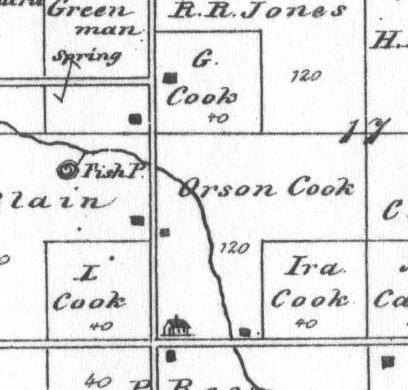
One of the teachers, or perhaps the teacher, was a Miss Hanna. At present nothing else is known about her. The name Hanna was well established in the area. One Hanna family owned land along the south side of what is today called 36th Street, from Fuller Avenue to Kalamazoo as far back as the 1850s. There is Hanna Floral, and Hanna Lake. But for now nothing else is known about Miss Hanna, save that like many people of the time, she was personally accomplished, as one can see from the entry in Mildred Fryling's class book.
Probably while at Godwin, another entry in another class book is by Arlene Keyes, likely a sibling of Forrest Keyes, Godwin class of 1932. The occasion for notes like this is not clear. Written in May, it might have been close to graduation day, but there was a 1938 class annual, unlike during the Great Depression years, so one might have expected signings to go there.
In the late 1950s and early 1960s some attempt was made to sell the school to someone who would want to turn it into a home. That kind of thing was popular at the time, and in fact a school located in the southeast corner of the intersection of Kalamazoo Avenue and 84th Street was converted, and is in use in year 2005. But no one seemed to want the Cook school building, and it was razed. In year 2005 there is no evidence on the property that the school ever existed. So far no photographs of the complete building have been have been found.
The material below is from a book entitled "One Hundred Years of Progress," by Cora Jaarsma, a history of Byron Center schools. Cook school is part of Byron Center, and is included in the history. Exerpts about Cook school are shown below.
Left click on the item below for a larger version.
Left click on any item below for a larger version.
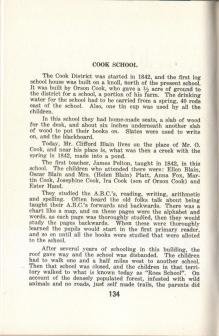
|
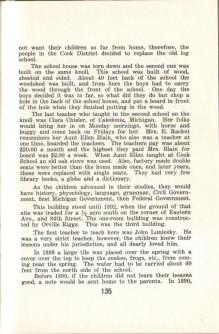
|
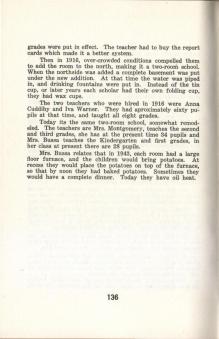
|

|

|
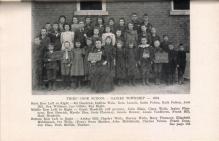
|
Material provided for scanning by Lillian Annis, class of 1941.
Left click on the images below for larger versions.
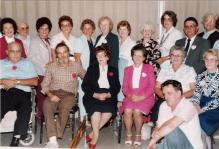
|

|
Left click on the images below for larger versions.
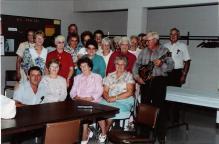
|
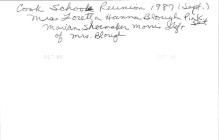
|
Left click on the image below for a larger version.
The painting above was done by Emogene Levette, and presented to teacher Loretta Hanna Blough in 1988.
Left click on the image below for a larger version.
Teacher Loretta Hanna Blough during a Cook School reunion in 1988.
Left click on the image below for a larger version.
The third Cook School reunion, 1988.
Left click on the images below for larger versions.

|

|
The second Kellogsville school.

First Kellogsville teacher.
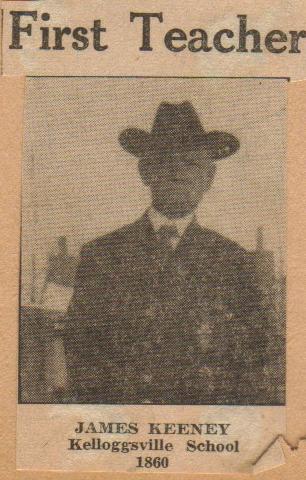
The two images above were provided by Mildred Annis, class of 1940.
The first Kellogsville teacher, James Keeney, is shown above. Hopefully photographs of some of the earliest Godwin teachers still exist, and will surface.
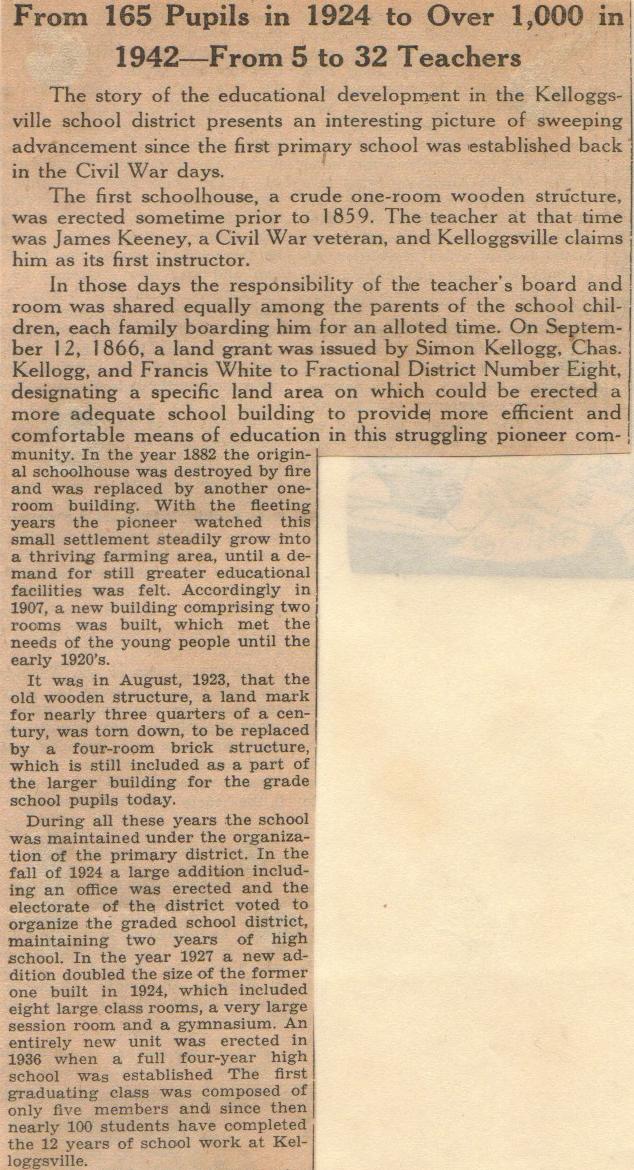
|

|
Material supplied by Mildred Annis, class of 1940.
left click on either image for a larger version.
Material provided by Lillian Annis, class of 1941.

Left click on the image below for a larger version.
The photograph of Seymour Christian school is shown in an undated photograph above. The foundation appears to be made of granite blocks, which would strongl suggest the building was constructed in 1900 or before.
Left click on the image for a larger version.
Material provided by Lillian Annis, class of 1941.
Left click on the image for a larger version.
Material provided by the Kentwood Historic Preservation Commission.
Left click on the images below for larger versions.
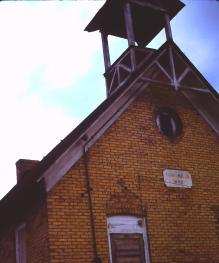
|

|

|
Left click on the image below for a larger version.

